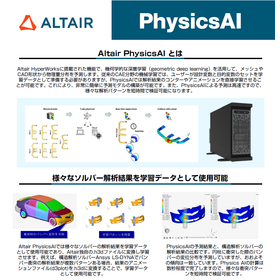We will apply a time-varying current and determine the heat generation density distribution and temperature distribution of the gear.
The induction heating of gears for hardening was analyzed for cases where the relative permeability depends on temperature (strong coupling) and where it does not depend on temperature (weak coupling). For more details, please download the catalog.
Inquire About This Product
basic information
【Features】 ○ The relative permeability depends on temperature (strong coupling) in some cases, and → does not depend (weak coupling) in other cases, which were analyzed. ○ Module used: "PHOTO-EDDYjω and THERMO coupling" ○ This module can perform automatic analysis without going through a heating file. ○ Magnetic field analysis (PHOTO-EDDYjω) → Electrical and magnetic properties Air: relative permeability 1.0, electrical conductivity 0.0 [S/m] Coil: relative permeability 1.0, electrical conductivity 0.0 [S/m] Metal: relative permeability temperature-dependent, electrical conductivity 5.0×10^6 [S/m] Input conditions: current value 2000 [A], frequency 100 [kHz] ○ Thermal conduction analysis (PHOTO-THERMO) → Heat resistance Air, coil: thermal conductivity 0.0256 [W/mK], specific heat 1000 [J/kgK], mass density 1.161 [kg/m3] Metal: thermal conductivity 50 [W/mK], specific heat 461 [J/kgK], mass density 7800 [kg/m3] Input conditions: heating temperature using the results of magnetic field analysis ● For more details, please contact us or download the catalog.
Price information
Please contact us.
Delivery Time
※Please contact us.
Applications/Examples of results
For more details, please refer to the catalog or contact us.
catalog(1)
Download All CatalogsCompany information
At Photon, we are developing "electromagnetic field analysis software" that models and simulates products and components utilizing electromagnetic phenomena on a computer. In traditional design and development environments, the process has primarily revolved around trial and error through prototyping based on the experience of engineers and experiments with prototypes. However, conducting experiments using actual prototypes and analyzing the results requires significant time and cost. Moving forward, transitioning from an experimental and prototyping-based approach to an analysis-based design approach will be a crucial challenge for improving productivity, and establishing simulation technology as the core of analysis-based design techniques will be essential. In this context, Photon is developing and providing "analysis software" focusing on electromagnetic fields, as well as heat, vibration, and sound fields. By utilizing Photon's software, efficient development and design of various industrial products can be achieved. In this way, Photon aims to support users in reducing the number of prototypes, lowering development costs, and shortening development periods in their manufacturing environments, ultimately enhancing their competitiveness.


![[Case Study 24] Product Catalog for Gear Hardening by Induction Heating](https://image.mono.ipros.com/public/catalog/image_generated/01/99c/223769/223769_IPROS2281612977121903814_1.jpg?w=120&h=170)


![[Magnetic Field - Heat - Structural Coupling Case] Analysis of Ultra-High Magnetic Field Generation](https://image.mono.ipros.com/public/product/image/a79/2000811638/IPROS38067428607662637983.png?w=280&h=280)
![[Analysis Case] Induction Heating Analysis of Steel Plates (Coupled Analysis of Magnetic Field and Heat)](https://image.mono.ipros.com/public/product/image/bc6/2000060423/IPROS57433509186211173817.gif?w=280&h=280)




![SOLIDWORKS 2026 New Features Seminar [Free Participation]](https://image.mono.ipros.com/public/default/object/noimage_l.gif?w=280&h=280)